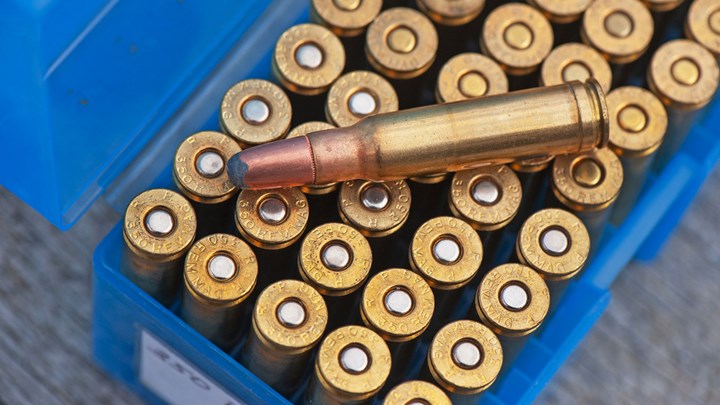
by Mark Chesnut - Tuesday, September 5, 2023

The National Rifle Association has joined with two other powerful hunter-backed conservation groups in an attempt to intervene in a court case involving a scheme that could lead to a ban on hunting with lead ammunition on the entire National Wildlife Refuge System.
NRA, Safari Club International (SCI) and the Sportsman’s Alliance Foundation have filed a motion to intervene in the lawsuit National Wildlife Refuge Association v. Halland that is being heard in the U.S. District Court for the District of Columbia. The case revolves around the U.S. Fish & Wildlife Service’s (USFWS) decision last year to withdraw plans to ban hunting with lead ammunition on the Canaan Valley National Wildlife Refuge in West Virginia in exchange for not granting the refuge any expanded hunting opportunities.
For some background, the USFWS had proposed phasing out lead ammo and fishing tackle on the refuge, along with a number of others, by the time it issued its expansion rule for 2026-2027. After the West Virginia Division of Natural Resources took issue with the plan, the USFWS punished the agency by declaring that it would not phase out lead on the refuge but it also would not provide any additional hunting opportunities, despite the NRA-backed National Wildlife Refuge Improvement Act of 1997 directing otherwise.
The lawsuit by the National Wildlife Refuge Association was filed alleging that the USFWS withdrawing the plan to phase out lead was arbitrary and capricious under the Administrative Procedure Act because it has acknowledged that lead is harmful to the environment. It’s also effectively asking the court to order the USFWS to promulgate a new rule banning lead on the refuge.
The problem is that if the USFWS’s general acknowledgments about lead being harmful to the environment are enough to require the federal agency to phase out lead in Canaan Valley, then it could have to phase lead out in the entire refuge system—which is exactly what the plaintiffs want.
The fact that hunting on millions of acres of wildlife refuge lands is at stake is what prompted the NRA and the other organizations to file the request to intervene in the case.
“The National Wildlife Refuge System was created to increase opportunities for families to engage in traditional outdoor activities,” said Randy Kozuch, executive director of the NRA Institute for Legislative Action. “The 1997 Improvement Act lists hunting and fishing as the first two priority uses for the Refuge System. Limiting access to the system runs counter to the concept of public lands and to Congress’ intentions. And regulating what type of ammunition may be used to harvest wildlife interferes with states’ traditional authority to manage their wildlife. This lawsuit gets everything backwards.”
The National Wildlife Refuge Improvement Act of 1997 specifically recognizes the role hunters play in wildlife conservation and directed the USFWS to make opportunities for people to enjoy hunting and fishing a priority. Consequently, the USFWS opens different areas of the refuge system to hunting and fishing each year.
At the time of the act’s passage, U.S. Rep. John Dingell (R-Mich.) put it best when he said, “I would remind all my colleagues and everybody in and outside this body that it was the hunters who set up and who maintained and who preserved, protected, and funded the wildlife refuge system, and it is the hunter with his small contribution of one duck stamp each hunting season that makes possible the continued acquisition of land for the precious purpose of protecting this system ..."
The push to ban lead ammunition on various public lands is a contentious one for several reasons, and the NRA has been involved in the fight against such a ban for decades. As we’ve reported in the past and as NRA-ILA regularly explains, such a ban would make hunting more difficult and more expensive for hunters who want to access these public lands. Non-lead ammunition, often made of copper alloys, is routinely cited as being at least 25 percent more expensive than traditional lead varieties.
Non-lead ammunition also can be very difficult to find at retail operations as there simply is not that much of it made compared to traditional lead ammunition. Additionally, those pushing lead ammunition bans are doing so without proof that lead ammunition is harming wildlife populations on the public lands, including national wildlife refuges.
Additionally, lead ammo bans proponents simply don’t have sound science supporting their side of the debate.
“No one disputes that lead can have a detrimental impact on an individual animal,” Larry Keane, vice president of the National Shooting Sports Foundation (NSSF), told NRAHLF.org. “There is no science, however, demonstrating that the use of traditional lead ammunition is having an adverse population impact. That is the relevant question, because the science of wildlife management is based on the principle that we manage wildlife populations.”
We’ll keep NRAHLF.org readers informed as the situation continues to unfold in the courtroom.
About the Author
Freelance writer and editor Mark Chesnut is the owner/editorial director at Red Setter Communications LLC in Jenks, Okla. An avid hunter, shooter and field-trialer, he has been covering Second Amendment issues and politics on a near-daily basis for nearly 25 years.
E-mail your comments/questions about this site to:
[email protected]
